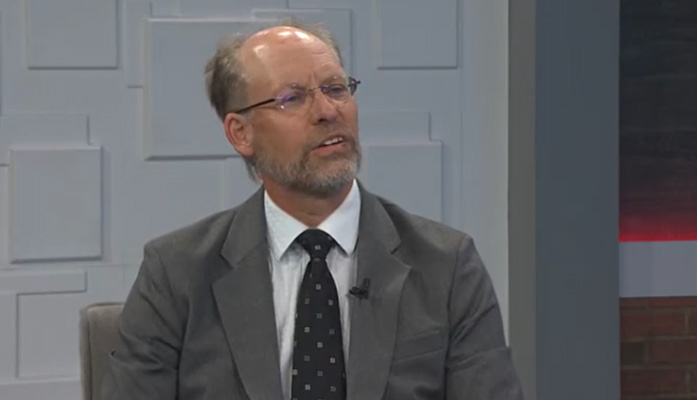
How many times can an organization falsely cry “wolf” before people start ignoring them? The Grand Canyon Institute—a self-described “centrist” think tank that has produced a stream of slanted studies and false predictions—seems determined to find out.
The Grand Canyon Institute has a history of producing embarrassingly inaccurate school choice “research.” Take its 2019 study claiming that 100 charter schools were in danger of financial collapse. This “analysis,” however, neglected normal accounting procedures. Five years later we find both the number of Arizona charter schools and the number of charter school students have increased, not declined. Apocalypse not.
Or consider the Institute’s claim earlier this year that Arizona’s Empowerment Scholarship Account (ESA) program generated a net cost of $332 million, which they blamed for one-third of the state’s budget deficit. But the Institute failed to properly account for changes in student enrollment. Just a couple months later, the Arizona Department of Education posted a $4.3 million surplus and the Joint Legislative Budget Committee’s figures showed a net savings from changes in student enrollment of nearly half a million dollars relative to projections. Oops.
Such embarrassingly wrong predictions would normally teach humility, but the Grand Canyon Institute has not yet learned its lesson.
Most recently, it criticized the ESA program for having funds that families have yet to utilize—$360 million, specifically, left over from the end of the previous fiscal year. The Institute apparently felt no need to examine why balances have grown. If it had, it would know that Arizona’s ESA program allows the families of K-12 students to opt into a state-funded and monitored account which they can use for a variety of educational expenses.
The participating families receive less funding per pupil (90% of the state funding and none of the local K-12 funds) but more flexibility, allowing families to use ESA funds for private school tuition, college course work, tutoring, special education therapies, and more. Because of the lack of local funding in the ESA program, the state can almost fund two ESA students for the cost of the average district student.
Lawmakers designed the ESA from the outset to allow parents to carry forward funds from one year to the next. This is a crucial feature to encourage people to use the funds in the account wisely. Private school tuition, for instance, is significantly higher for high-school students than for students in elementary and middle school. The rollover feature allows parents of younger students to financially prepare for such expenses.
From the outset, the ESA program has also allowed parents to use unspent funds on post-secondary tuition and books for a prescribed period after high school graduation. After the period elapses, account balances revert to the state treasury, and the Treasurer’s office generates interest income, which in the meantime goes to the state.
Account balances have grown in large part because the Arizona Department of Education has tens of thousands of reimbursement requests pending in addition to other cumbersome payment problems. Moreover, the summer diktat from Attorney General Kris Mayes to attach a curriculum to a substantial number of purchases has slowed the expense approval and reimbursement process even further.
In other words, the Department has been more proficient at funding ESA accounts than they have been at allowing participating families to use their funds. If Attorney General Kris Mayes decides to stop needlessly harassing ESA families and/or the Department manages to improve the implementation of the program, account balances will shrink.
Arizona school districts had unused funds of $6,439,365,709 at the end of the end of the 2023 fiscal year. This level of unspent funds is approximately four times the size of Arizona’s rainy-day fund, and many times larger than unused ESA balances. It is not only larger in absolute terms, but also substantially greater on a pe- student basis: the average of unspent district funds per pupil exceeds the same figure for ESA students by approximately 50 percent per student.
One could do a great deal with $6.4 billion. It is almost enough to have paid the full tuition and fee expense for the entire undergraduate student body of both the University of Arizona and Arizona State University in 2023. If districts had distributed the $6.4 billion to the state’s 48,000 district teachers, it would have pushed average compensation for teachers to over $131,000. Not all district funding is fungible across uses, but the scale of the school district hoarded cash is truly breathtaking.
The Grand Canyon Institute touts itself as “non-partisan,” a claim Arizona reporters often parrot. Its board of directors includes five Democrats, four independents and one director whose partisanship is not noted but who has actively donated to Democratic candidates. Perhaps this counts as “non-partisan” in some circles, but the organization’s ideological slant is clear.
Arizona districts have taken out billions in debt to build new buildings—odd in a state that has suffered from a baby bust since 2008 and with declining district enrollment, but not so strange once you learn builders often fund the district bond campaigns. It’s much easier for district interests to scapegoat the state’s ESA program than to face up to their own priorities.
Sadly the Grand Canyon Institute is a reliably unreliable participant in that process.
Matthew Ladner is a Senior Advisor for education policy implementation in Heritage’s Center for Education Policy.

